On its 50th anniversary, we celebrate the arrival, trajectory and future promise of the Renault 5
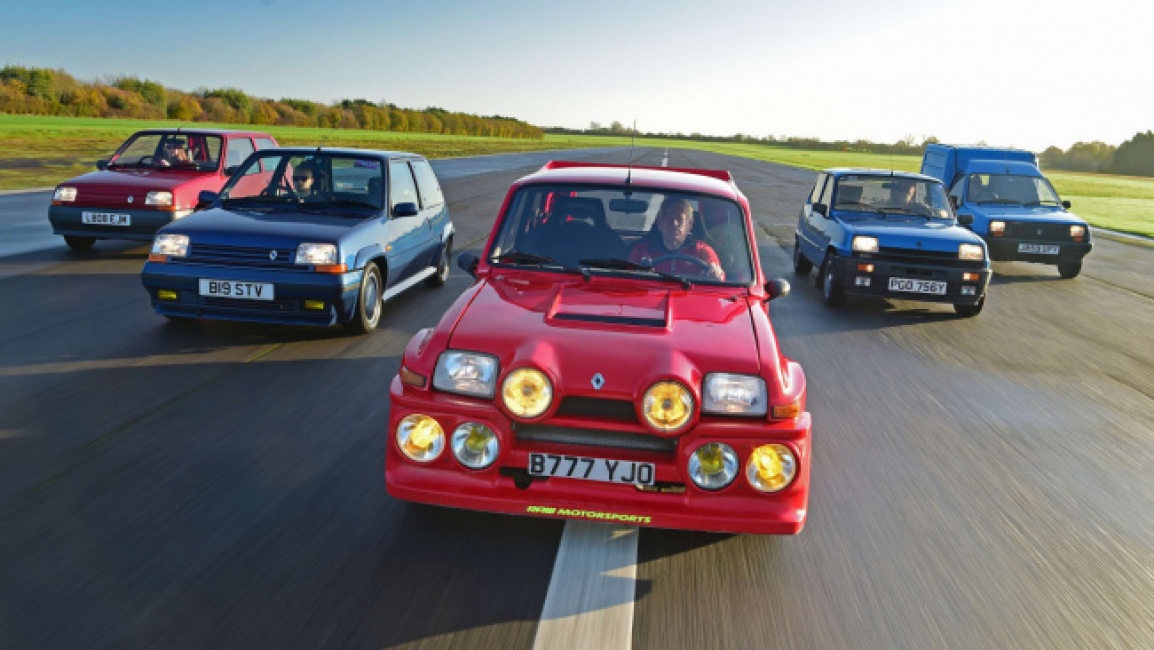
Hear the word ‘supercar’, and your brain is most likely sent off in the direction of high-performance exotics from Ferrari or Lamborghini. However, if you were browsing auto advertisements 50 years ago, it wouldn’t be long before you stumbled across one for Renault’s new small model, in cute cartoon form, claiming that its latest creation was the “supercar” to rule them all.
That car was, of course, the 5 – and in terms of its success, it certainly proved to be as super as anything Renault produced before – or pretty much since. The brand claimed the 5 could do it all: “A car for all seasons, for holidays and for work, for weekdays and for weekends, for town and for country.” Or, to give it the snappier French tagline, a “voiture à vivre”, or “car for life and living”.
In total, nine million examples were produced from launch until a replacement, the Clio (which was manufactured for a brief period simultaneously), took its place. To mark the 5’s 50th anniversary, we assembled some of the most memorable models from a very diverse back catalogue to see what made the car so special. We also look forward to the 5’s all-electric reincarnation to see what the future holds.
Renault 5 Mk1 GTL/Alpine
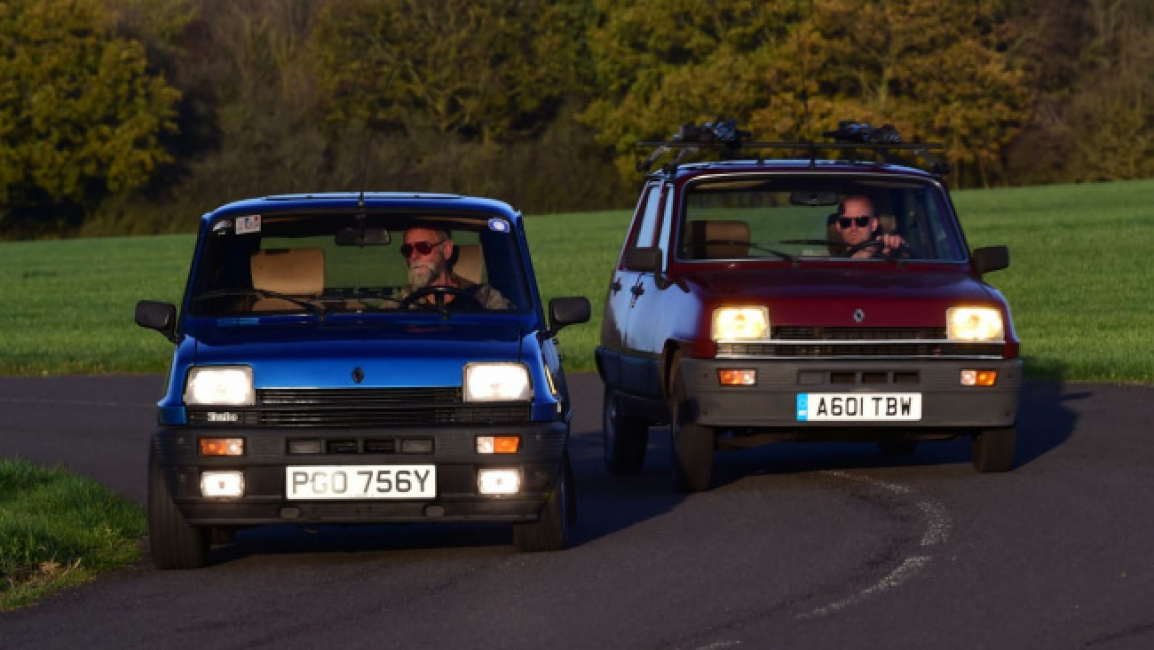
| Model: | Renault 5 Mk1 GTL/Alpine |
| Engine: | 1.4-litre 4cyl turbo (Alpine) |
| Power: | 110bhp |
| Transmission: | Five-speed manual, front-wheel drive |
| 0-60mph: | 8.7 seconds |
| Value today: | From £2,000 (GTL)/£10,000 (Alpine) |
In the seventies, the city car formula needed a rethink. Cars such as the Mini and the Fiat 500 had already revolutionised urban travel for the masses, but both had been around for some time. The need for something new among the French brands was even more pressing. The home market for affordable motoring was split between the Citroen 2CV and the Renault 4 – both accomplished models in their own way, but lacking the sophistication needed to move the sector forward much further.
The 5 was Renault’s answer, and after it was launched, it proved to be a hit almost instantly. In excess of 126,000 models were sold in the first full year of production, with figures peaking in 1980, when Renault shifted more than 700,000 cars of all versions. Of the total production run of around nine million, 5.5 million were the first-generation model produced between 1972 and 1986.
Today, it’s easy to see where the appeal lay, even before we get behind the wheel of the two Mk1 models we have here – a modest-spec GTL in five-door form, and a gorgeous Alpine Turbo. Renault designer Michel Boué penned the car in his spare time between other projects, but company executives were so pleased with his work that very few changes were made to bring his vision to production.
Practicality was a key bonus compared with those earlier small-car icons from Fiat and Mini because, unlike those, the 5 was one of the first mass-production cars to have a now-conventional hatchback design. Access to the boot was easy, and space could be increased further by folding down the back seats. Rear kneeroom is a little cramped by modern standards.
Mechanically, there were some curiosities. The engine was mounted longitudinally and drove the front wheels. It sat behind both the gearbox and the front axle; great for weight distribution, but less so for home mechanics trying to reach the rearmost spark plugs.
Hopping in the base GTL first, the car feels utterly charming. The small dimensions are such a welcome change from the vast SUVs you’ll find on any modern school run, and with tiny wheels and skinny tyres, the GTL is smooth and comfortable to drive, too. Sure, the 54bhp 1.3-litre petrol unit is a little noisy and needs working to make progress, the gearshift is vague and there’s plenty of roll in corners, but the modest pace plus the feeling of airiness and comfort only encourage you to drive in a more relaxed manner.
Some further excitement came in the shape of the Alpine. The formula remains similar to today’s iterations: take a humble supermini and add power. It was known as the Gordini in the UK because, at the time, Chrysler held the rights to the Alpine name here, but mechanically it was identical to the European models. There were two versions: the original had 92bhp, while from 1982, a turbo boosted power to 110bhp – enough for a 0-60mph time of 8.7 seconds.
Even with forced induction, the power delivery is progressive. The throttle is very sensitive, which combined with the low kerbweight means the car springs forward with real enthusiasm. The vague gearshift of the basic versions remains, but body movement is better contained, with the Alpine squatting through corners to deliver a feeling of poise that’s only possible in a car that weighs barely 800kg.
Early, more simple models such as the GTL remain very affordable classics; their low weight and modest power make them economical to run, while values for decent working cars start from around £2,000. Alpines can sell for much more, with values ranging from £10,000-25,000.
Renault 5 Turbo 2
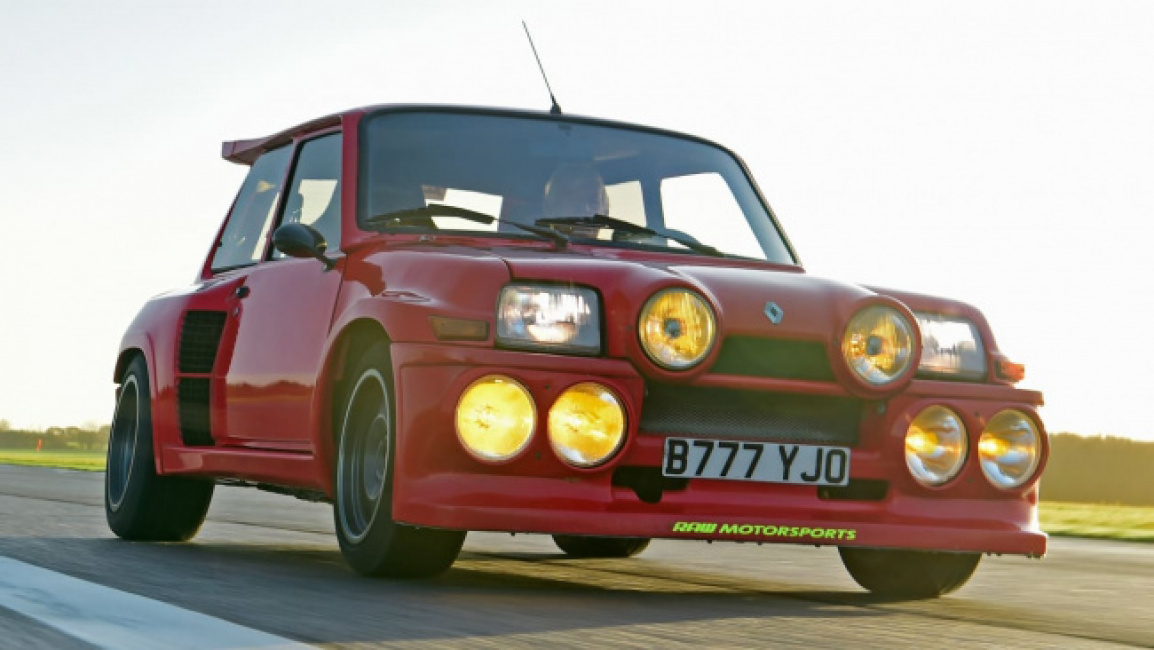
| Model: | Renault 5 Turbo 2 |
| Engine: | 1.4-litre 4cyl turbo |
| Power: | 160bhp |
| Transmission: | Five-speed manual, rear-wheel drive |
| 0-62mph: | 6.9 seconds |
| Value today: | From £60,000 |
In the mid-seventies, the World Rally Championship was dominated by the Lancia Stratos – a car that, in effect, was designed specifically for the purpose of blitzing special stages. This left rival manufacturers scrabbling to come up with a suitable competitor.
Renault’s answer to the Group 4 regulations was the 5 – but one unlike any model that had been seen up to that point. The front-mounted engine was ripped out, while the back seats were ditched. In their place sat a 1.4-litre turbo unit driving the rear wheels. The car’s track widths were increased significantly – especially at the back – both to handle a power output that climbed well north of 300bhp in later competition versions and to improve cornering speeds.
The 5’s short wheelbase delivered incredible agility, but unfortunately for Renault, its release coincided closely with that of Audi’s Quattro, whose four-wheel-drive system was able to deliver superior traction on loose surfaces. That’s why of the 5’s four wins at the pinnacle of rallying, three came on Tarmac rallies in Monte Carlo and Corsica.
As with all participating manufacturers of the time, Renault had to produce at least 400 road-going examples of the 5 in order to pass the WRC’s homologation regulations, which it did with the original Turbo. Later on, Renault released the updated 2, which is what we’re driving here.
Crazy air vents and comically swollen arches mean that no 5 Turbo will ever be seen as a shrinking violet, but this example is even more wild than most. Equipped with the Maxi bodykit, the already madcap appearance gains fibreglass add-ons that consist of six huge front spotlights on the car’s face and further cladding that extends from the A-pillars at the front to the huge rear wing on the roof. Throw in tyres that are very different in width front to rear – original models had 190-section rubber at the front and 220mm-wide rubber at the back – and there’s not a single angle from which the Turbo 2 doesn’t still look completely bonkers, even 37 years after this example was registered.
In the case of the early Turbo 1, it was equally ridiculous on the inside. Styling house Bertone, also responsible for the exterior, created a cabin with mad stacks of gauges across the instrument panel and a bizarre asymmetrical steering wheel. However, things were toned down somewhat for the Turbo 2, with a dashboard design that more closely resembles that of the regular Renault 5 Mk1 models. Until you look over your shoulder, because there’s an engine sitting where you’d expect to find the back seats and boot.
The cabin feels a little cramped, and all of the controls have plenty of heft – especially the unassisted steering. Most of all, this car is loud. The engine sounds angry, impatient and desperate to be thrashed. It’s backed up by throttle response that is razor-sharp and constantly on edge – and that’s before the turbo kick arrives.
Turbo 2 values vary wildly today based on originality and condition. It’s rare to see a car fetch any less than £60,000, however, and you might need to double that figure for the very best out there.
Renault 5 Campus
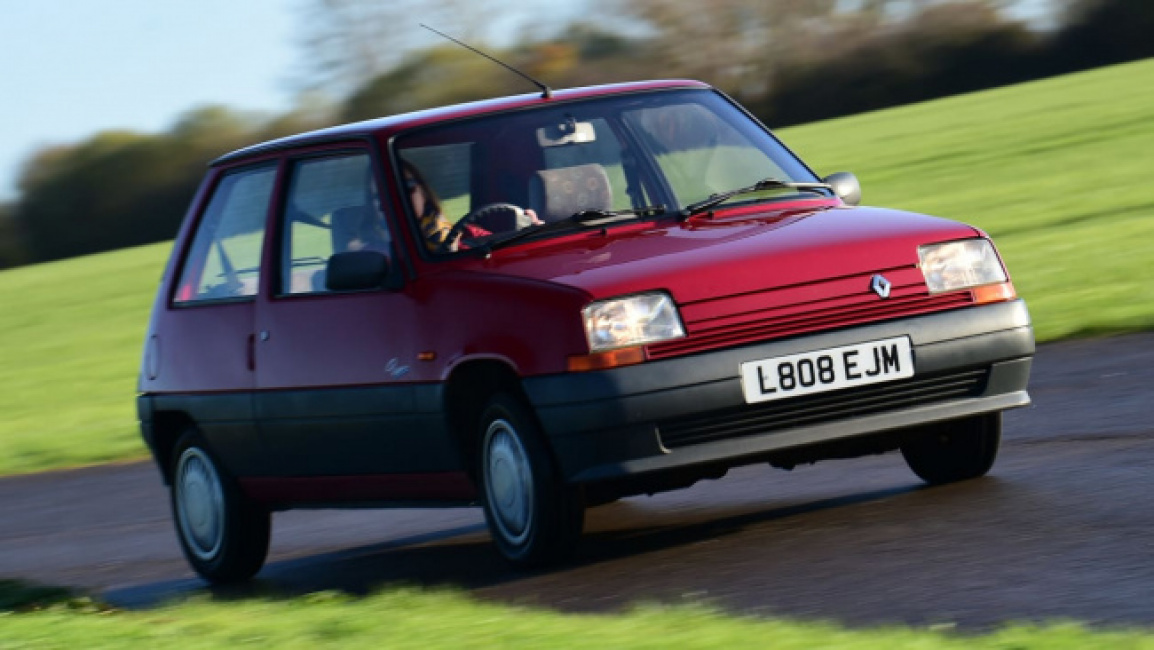
| Model: | Renault 5 Campus |
| Engine: | 1.4-litre 4cyl |
| Power: | 75bhp |
| Transmission: | Five-speed manual, front-wheel drive |
| 0-62mph: | 11.5 seconds (est) |
| Value today: | From £3,000 |
In 1984, Renault subjected the 5 to a significant overhaul. So significant that little more than the name stayed the same. Under the skin, the car was all-new. The platform was shared with the larger Renault 11, while the body grew slightly in size compared with its predecessor, too. It kept the distinctive shape, but now measured 3,591mm long. It’s still tiny by today’s standards, but was 70mm longer than the original, while the glass area was enlarged to improve all-round visibility.
The big change mechanically was that the longitudinal engine layout was swapped for a transverse set-up, which gave the ‘Super Cinq’ an arrangement similar to that of contemporary rivals from Volkswagen, Ford and Peugeot, not to mention much improved use of space.
The model we’re testing here is one of the very last UK-sold 5s. Indeed, with the car registered in December 1993, sales of its replacement, the Clio, had been running here for more than three years already. To separate the two, then, this model is as basic as it comes; there’s no radio, sunroof or even any central air vents. That resulted in a big difference in price; while the R5 Campus started from £5,120 in 1993, the cheapest Clio cost £6,715.
Well equipped or not, the 5 remained charming to drive. Compared with the previous generation, it certainly moved the game on. Its dash was all-new, with a distinct central section bringing the chunky heater controls closer to hand. The dial arrangement is neater, and visibility is fantastic.
The differences continue out on the road. Major controls, including the steering and particularly the gearshift, are much more precise (although the former remains heavy at parking speeds without any power assistance), and overall it feels a little more substantial and refined. Body roll is slightly better controlled, yet not without sacrificing ride comfort; the overall set-up remains relaxing.
This run-out car also benefitted from Clio tech. While earlier models mainly used carb-fed engines, this model featured a fuel-injected 1.4-litre unit from its successor. The inclusion of a catalytic converter helped to clean up emissions, yet with 75bhp to move a relatively modest weight, it still feels sprightly. Production of the 5 continued until 1996, and it’s still not too hard to find cars on the used market today. Tidy examples are available for £3,000 or so, making it a wonderfully affordable classic.
Renault 5 Extra
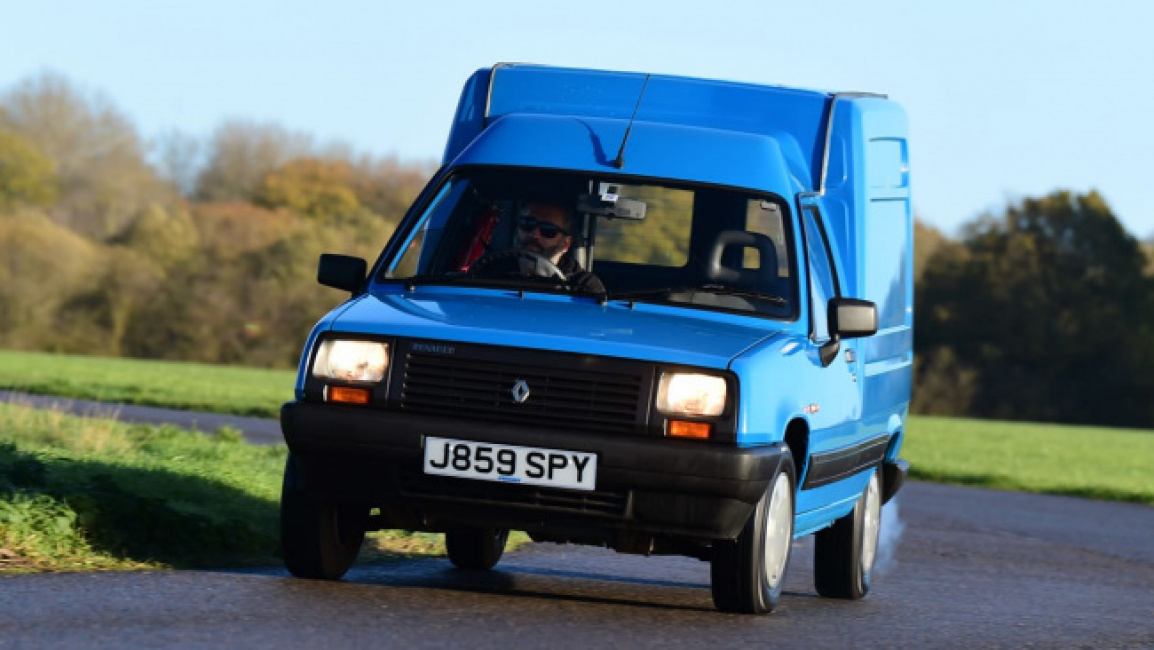
| Model: | Renault 5 Extra |
| Engine: | 1.4-litre 4cyl petrol |
| Power: | 67bhp |
| Transmission: | Five-speed manual, front-wheel drive |
| 0-62mph: | 14.5 seconds |
| Value today: | From £4,000 |
For all the Turbo 2’s wildness and Alpine’s rarity, one of our group’s most head-turning cars is the Extra van. While it’s to be expected that those high-performance models are a rare sight on our roads, seeing a van that has avoided the hardships of working life for the best part of 25 years is even more remarkable; the example in these pictures is in superb condition.
The transformation from second-gen 5 into van was fairly extensive. The wheelbase was stretched by 113mm compared with the five-door, most of whose metalwork the Extra shared up to the B-pillars. From there, the panel-van section turned the 5 into a genuinely spacious yet compact commercial vehicle. Some even had windows in the back and were available as a ‘combi’ with five seats.
The others, such as this example, instead had the conventional van layout. Open up the double rear doors and the space is wide. Save for some wheelarch intrusion, it’s easy to see its superb versatility. There’s even an extra shelf in the roof above the front seats for storage.
Under the bonnet, some engines were shared with the 5, including the 1.4-litre petrol in this car. A 1.6 naturally aspirated diesel – and later a 1.9 – were also available. Both offered a little more torque than the petrol, with a maximum of 123Nm with the larger unit.
Hop behind the wheel, and bizarrely, the first comparison that comes to mind is a more recent Renault Group product: the Dacia Jogger. Both are boxy, practical vehicles with supermini origins, and both feel smaller and more nimble than you’d expect.
Unless you look back and notice the extra metalwork (and limited visibility), the Extra is no more cumbersome than the standard 5. It maintains a similarly relaxing ride and it corners neatly, albeit still with plenty of body roll. The carb-fed engine feels lively at low speeds, with keen but predictable throttle response. As with the Campus, its later-generation 5 box is fairly precise, and the steering is light enough even when manoeuvring.
Production of the Extra continued into the 2000s, although in 1997 it was replaced by the Kangoo. Due to the model’s rarity, values remain strong. While examples are very hard to come by in the UK, expect to pay at least £4,000 if one happens to pop up for sale – and more for clean, cherished versions.
Renault 5 GT Turbo
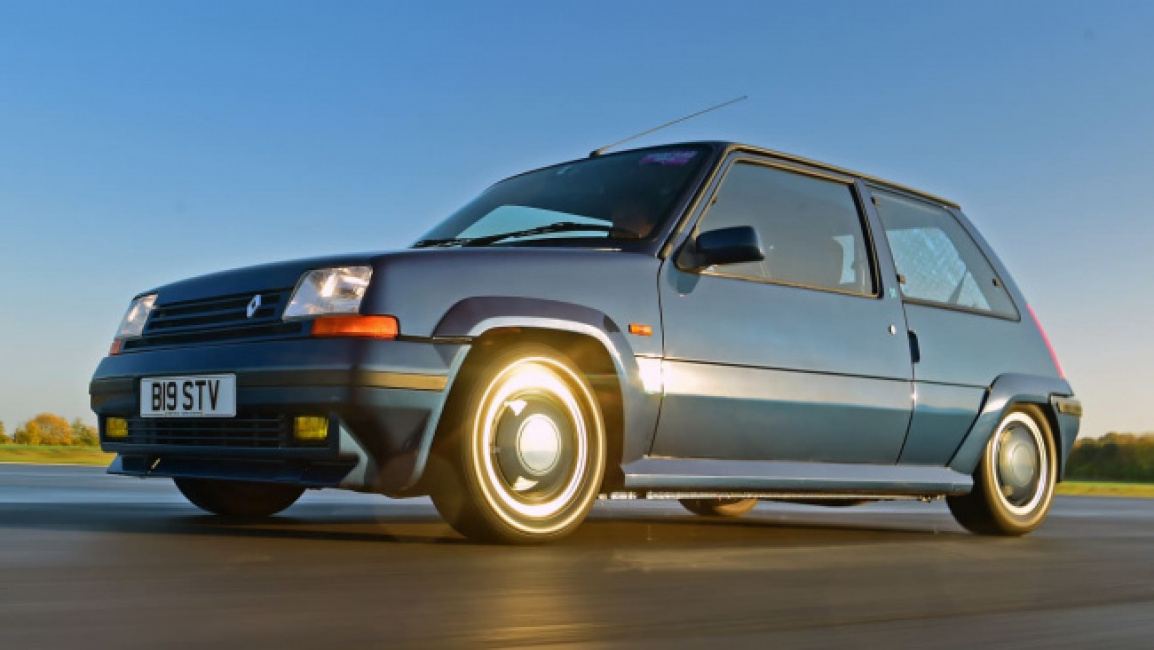
| Model: | Renault 5 GT Turbo Raider |
| Engine: | 1.4-litre 4cyl turbo |
| Power: | 118bhp |
| Transmission: | Five-speed manual, front-wheel drive |
| 0-62mph: | 7.5 seconds |
| Value today: | From £12,000 |
For the performance version of the Mk2, Renault again turned to forced induction to boost the output and up the thrills on offer. But while the first Turbos were mid-engined homologation specials, the GT Turbo was more of a conventional hot hatchback, designed to take on the VW Golf GTI and its French nemesis, the Peugeot 205 GTi.
Unlike modern hot hatches, which are pretty much universally turbocharged, upon the GT Turbo’s 1985 release such methods for getting power were unconventional; the 1.4-litre turbocharged, carb-fed engine put out 113bhp – not bad considering the car’s comfortably sub-900kg weight.
The modifications to transform the 5 into a more fiery version were standard hot-hatch fare; firmer, lower suspension, a wider track, bigger brakes and a purposeful bodykit. A phase-two version was introduced in 1987, which introduced revised styling and a 118bhp engine.
The model we’re driving here is a GT Turbo Raider. Introduced in 1990, it’s singled out by its unique Raider Blue paint and colour-coded wheels, plus a unique trim finish inside – one area where, as it’s clear from this example, Renault really nailed it. All the bits that the driver interacts with the most are simply sublime; you slip into the heavily bolstered yet wonderfully supportive seat like you would a tailor-made coat, while ahead you’re presented with what must be one of the best-looking combinations of steering wheel and instruments of its era. It feels more special than either of its two closest contemporaries from VW and Peugeot.
It feels quite different to either of them to drive, too – and not only because of the turbo. Where the Peugeot seems edgy and featherweight, and the Golf more stable and predictable, the 5 is somewhere between the two. It’s certainly more playful than the VW, but it never steps onto its tiptoes like the 205.
Of course, the engine sits at the heart of the experience. This particular model has had the turbo boost wound up ever so slightly, so the GT Turbo remains very peaceful – almost sedate – until just below 4,000rpm. At that point, it’ll pin you back into the seat and fire itself towards the horizon at a pace that wouldn’t feel out of place in a modern hatch.
It’s certainly exhilarating, and an experience that still feels thrilling beside modern hot hatches. Examples aren’t too difficult to find today, but they’re hugely desirable; it’s rare to see even scruffy versions for less than £12,000.
Renault R5 Concept
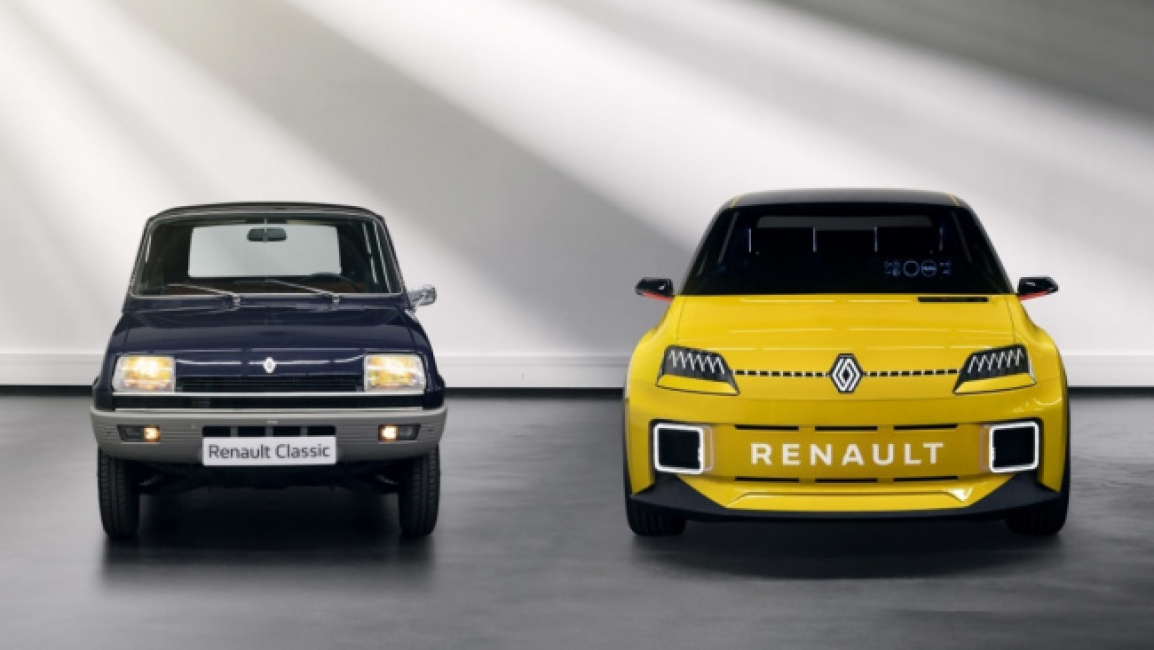
There’s plenty of history behind the Renault 5 name, then, and with such an iconic design, it was only a matter of time before Renault would reimagine the Cinq for the future. We got a glimpse of what that might look like last year, when the company released the 5 electric concept. Better still, a production version will hit the market in 2024.
The concept borrowed plenty of design cues from the original versions, including that instantly familiar silhouette. Close up it reveals the sort of neat details that would make Michel Boué proud: flared arches are a nod to the Turbo models, while the vertical tail-lamps and the distinctive face with square light units should all make it to production in a similar form. The charging port, which should be capable of accepting a similar 130kW rate to the Mégane E-Tech, is hidden neatly under a vent in the bonnet – another touch that references the classic models.
Under the skin, the 5 is set to be the first model in the firm’s line-up to use the Renault-Nissan Alliance’s new CMF-BEV platform. It should be capable of offering a range of up to 249 miles thanks to a 52kWh battery pack. A single 134bhp electric motor will offer more power than the GT Turbo and should deliver a strong punch of torque.
Low cost is the key aim with this platform. When the concept was first unveiled, bosses estimated that the new car would be roughly 33 per cent cheaper than the Zoe. Despite price rises since then, the 5 could start from as little as £25,000, which is not only affordable by EV standards, but it would make the 5 roughly the same price as some Clio models.
Keyword: Ultimate Renault 5 group test review: Turbo, GT Turbo, Alpine, Campus, Extra, all head-to-head
